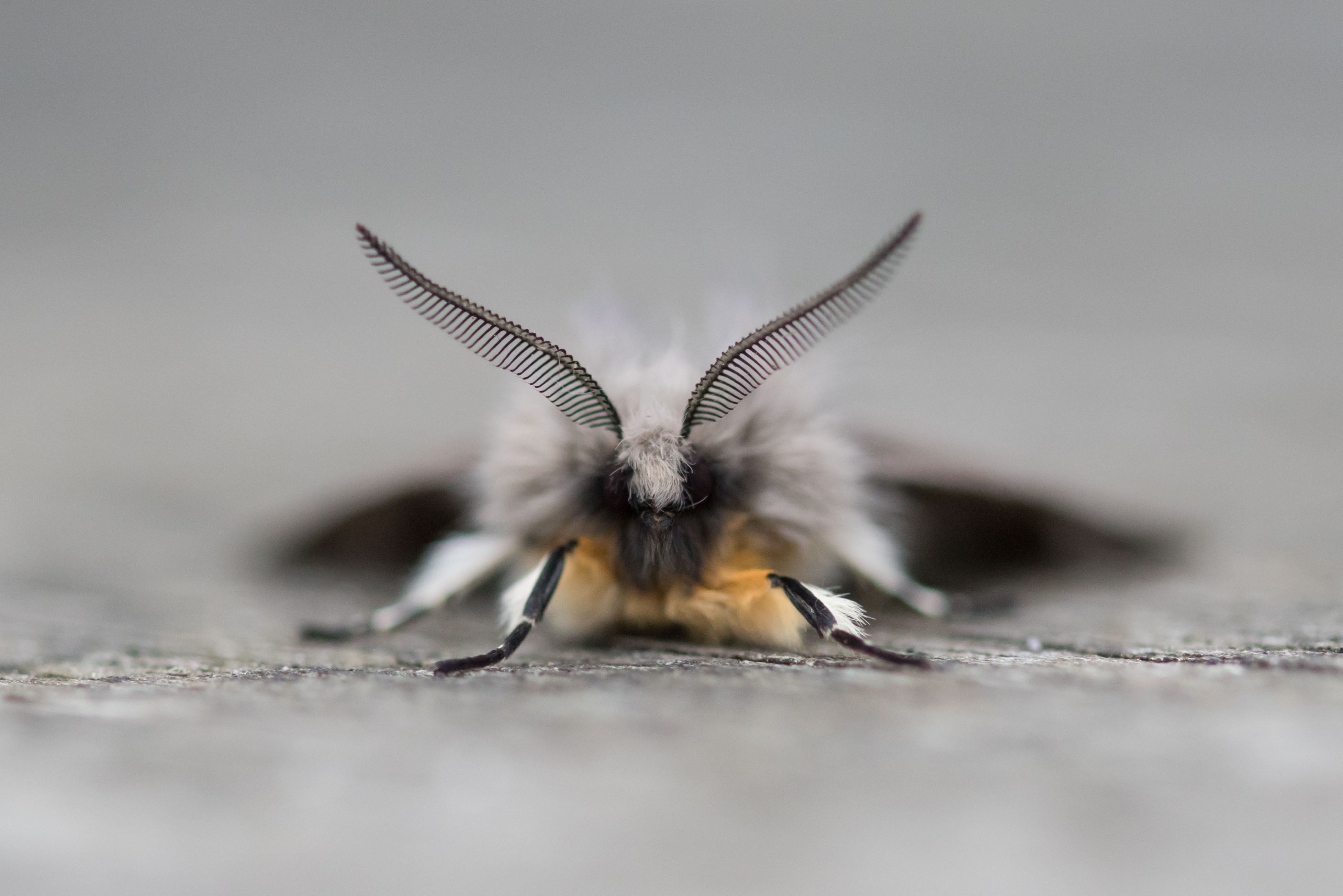As some early spring warmth has arrived, I have begun putting out the moth trap a few times a week in our small suburban garden. This is my first spring trapping after a moth trap arrived for Father’s Day last June (see here for the highlights of last summer’s mothing). As such, nearly everything I catch is new to me, which creates exciting and challenging identification puzzles. Moths have fabulous names. There are Small Quakers, Powered Quakers and Common Drab Moths, but mostly there seem to be a lot of Common Quakers, the default spring moth:
The appropriately named Early Grey always catches the eye:
A personal favourite is the Brindled Beauty…
… not least as it possesses fabulous antennae:
The Muslin Moth may not look that interesting from above:
But this is one magnificent beast. There is something quite noble about that face:
The small but colourful Red-green Carpet. The green colour also extends to it’s eyes: 
A surprise in the trap was this Dark-edged Bee-fly: 
These beasts predate wasp and bee pupae (see here for my experience of Dotted Bee-fly attempting the remarkable process of kicking it’s eggs into bee’s holes on the Oxfordshire downs).
That is one giant proboscis: 

Bring on the warm summer nights and an even greater selection of moths to enjoy.
